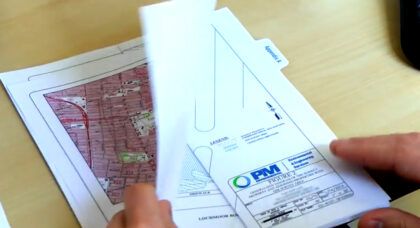Are changes to the ASTM Phase l ESA going to impact your business?
New Phase I Environmental Site Assessment (ESA) Standard Issued – ASTM issues 1527-13 Standard on November 6, 2013
How will the ASTM E1527 affect my company?
Changes in E1527-13 consist of simplifications, clarifications, and increased detail or guidance on provisions that were already in E1527-05. This will allow Environmental Professionals (EPs) to better discuss and categorize concerns found during the completion of Phase I ESAs.
However, there are some important changes that could impact turnaround time, costs, and recommendations for additional investigation (i.e. Phase II ESAs).
File Reviews
Previously, EPs performing Phase I ESAs were not required to perform regulatory file reviews. The new standard states the EP “should” review pertinent regulatory files or justify the reason why the regulatory file was not reviewed.
How does this affect you?
- Known Scopes of Work – This may simplify comparing the price and delivery time of a Phase I ESA. For some companies, including PM, file reviews are standard procedure. Others, however, can leave this step out to provide a lower cost bid. Make sure to compare “apples to apples” bids.
- Increased Costs – Reviewing regulatory files often increases the cost of a Phase I ESA. This is why some companies who do not do it as part of their standard scope of services appear to have lower prices.
- More Thorough Information – Reviewing regulatory files often results in more thorough information, allowing the EP to make conclusions and eliminate Recognized Environmental Conditions (RECs).
- Longer turnaround time – In many instances, reviewing regulatory files may extend the delivery time for a Phase l ESA. This is due to reviewing the files at regulatory agencies, which takes additional time. The standard industry turnaround time is 3-4 weeks. Consultants who do not include regulatory file reviews as part of their standard scope of service may offer a shorter lead time.
Vapor Intrusion
The impact of vapor intrusion is now a consideration when performing Phase I ESAs. Along with soil and groundwater, an environmental professional must consider the contamination in the soil vapor phase. E1527-13 includes vapor in the definition of “migration” and also clarifies that vapor intrusion/migration does not fall under the category of an Indoor Air Quality concern (which is out of the ASTM 1527 scope of work).
How does this affect you?
Phase II ESAs will often include Vapor Sampling – The US Environmental Protection Agency (EPA) and state environmental regulatory agencies have been developing vapor intrusion guidance for the last few years. The change to E1527-13 will result in vapor concerns being evaluated as a relevant contaminant pathway in Phase II ESAs. If vapor impacts are present, costs will increase to monitor and/or mitigate (i.e. engineering controls) to meet Due Care/Continuing Obligations.
New Terminology
Several key definitions within E1527-2013 have been added and revised to add clarity. However, a key new term is Controlled Recognized Environmental Condition (CREC): The new “CREC” definition can be used to describe a site that has been cleaned up but not to unrestricted use criteria, and it remains restricted for certain applications (such as building an apartment complex or housing unit, for example), unlike an “HREC” (Historical Recognized Environmental Condition) where a site has unrestricted use.
How does this affect you?
The new term gives EPs more flexibility in describing RECs and assessing whether the REC is an issue that needs to be dealt with immediately, is a controlled REC that is acceptable based on land use, or a historical REC that no longer presents an issue.
PM Environmental is there for you. As a member of the ASTM committee, PM Environmental has been actively involved and is well-versed in the new standard and is prepared to implement the new ASTM E1527-13 standard. PM is a national environmental consulting and engineering services firm consistently ranked in the top 20 nationally by EDR® Scorekeeper.
Further Reading
- For a deeper look into the ASTM E1527-13 standard changes: “A Closer Look at the ASTM E1527-13 Changes” Steven E. Price, CHMM, Principal and Vice President of PM Environmental
Program docket: “Summary of Updates and Revisions to ASTM E1527 Standard Practice for Environmental Site Assessments: Phase I Environmental Site Assessment Process”
Publication Details
Date
November 13, 2013



